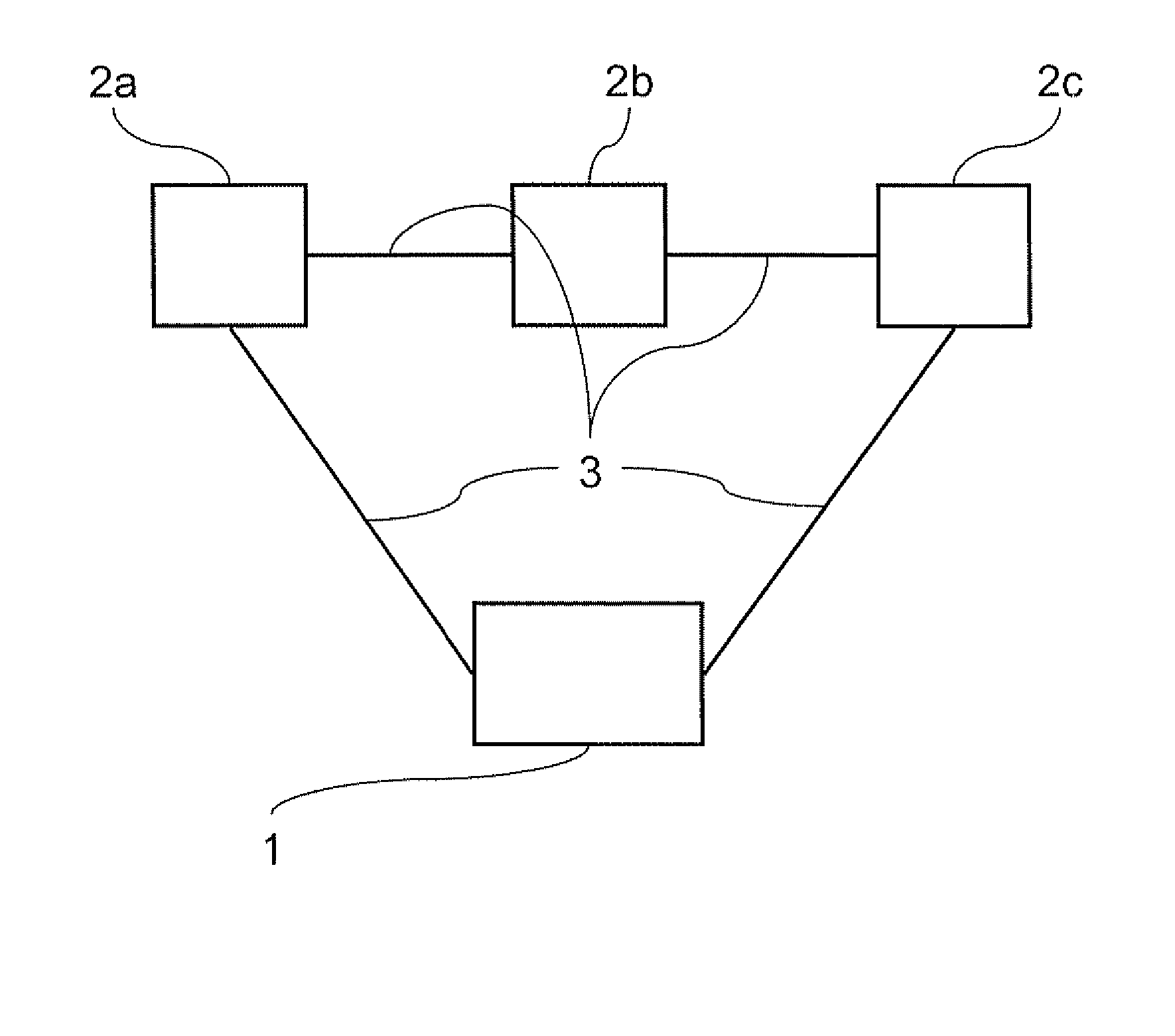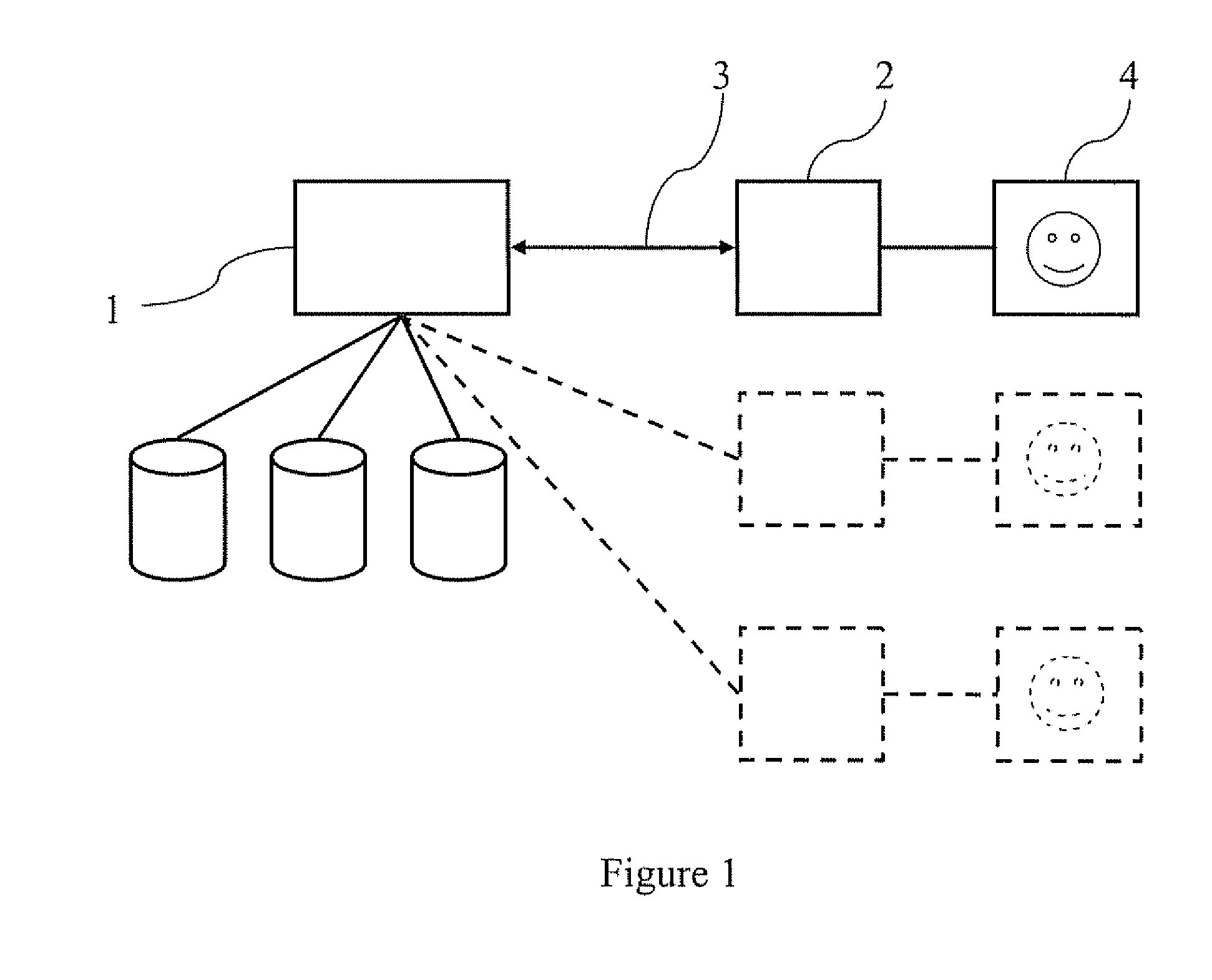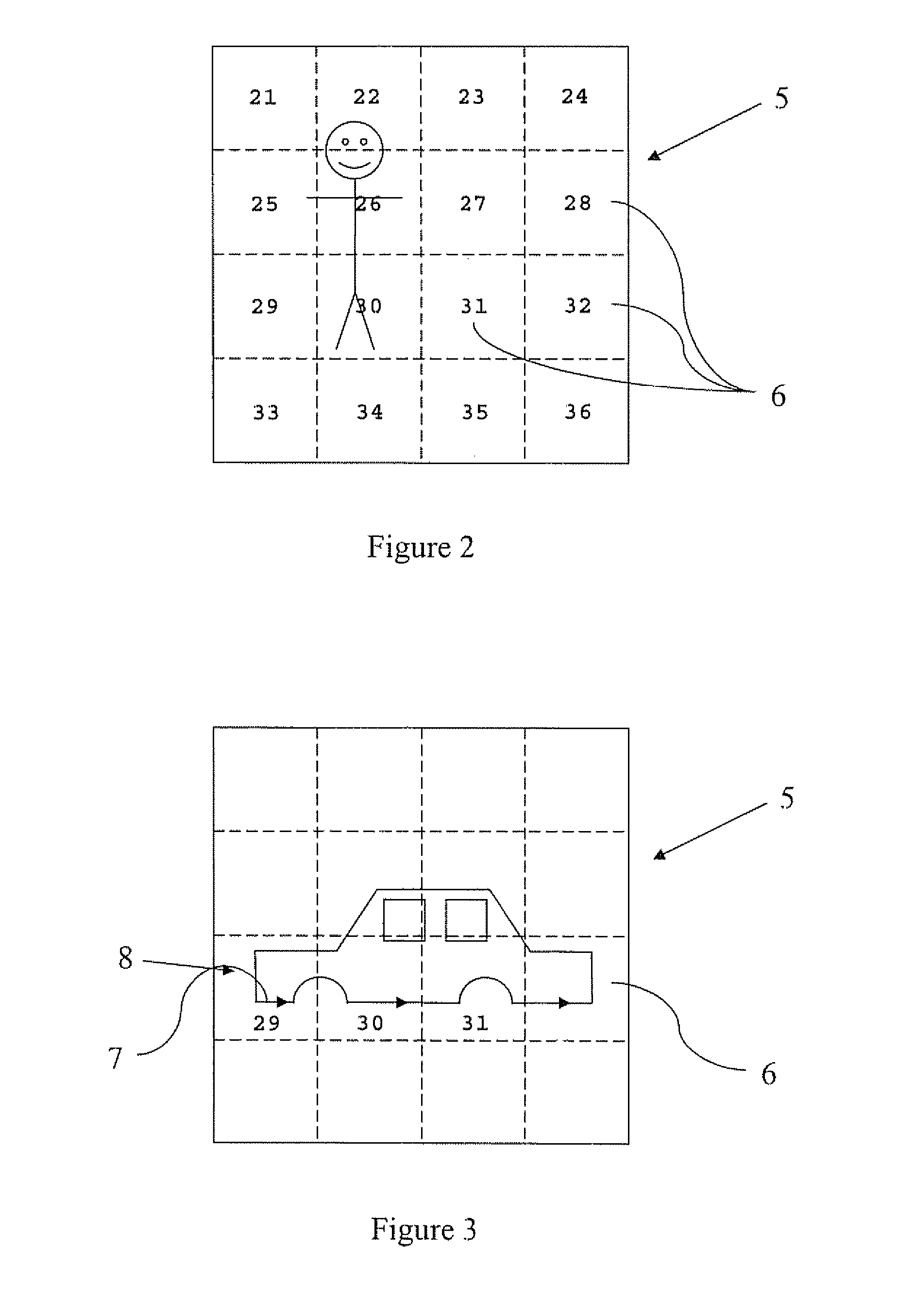Method of and apparatus for image serving
a technology of image file and image, applied in the field of image file transfer, can solve the problems of insufficient image market optimization, almost certainly wrong appearance, and inability to effectively use small amounts of pistol in the hands of actors, so as to avoid data split up and effective use
- Summary
- Abstract
- Description
- Claims
- Application Information
AI Technical Summary
Benefits of technology
Problems solved by technology
Method used
Image
Examples
Embodiment Construction
[0046]FIG. 1 shows a typical client-server architecture. A server 1 is connected to a client 2 by a link 3. The client 2 has a display screen 4 upon which the image is shown. Further clients could be connected to the server 1 as indicated by the dashed lines. In image serving, the requirement in terms of data transfer per second is generally much higher than with commercial clerical systems. A typical architecture has multiple channels or ‘pipes’ between points as the client-server links 3. Each of these ‘pipes’ has a maximum data transfer capacity.
[0047] One architecture we have found suitable to build such systems is manufactured by Picolight Incorporated of 1480 Arthur Ave Louisville, CO 80027 USA (www.picolight.com). The model used transmits data at a rate of 3.125 Gbits per second on each channel or pipe and we have used twelve of these pipes together, giving a total data capacity of 37.5 Gbits per second. It is necessary to utilise substantial buffering at each transceiver, a...
PUM
 Login to View More
Login to View More Abstract
Description
Claims
Application Information
 Login to View More
Login to View More - R&D
- Intellectual Property
- Life Sciences
- Materials
- Tech Scout
- Unparalleled Data Quality
- Higher Quality Content
- 60% Fewer Hallucinations
Browse by: Latest US Patents, China's latest patents, Technical Efficacy Thesaurus, Application Domain, Technology Topic, Popular Technical Reports.
© 2025 PatSnap. All rights reserved.Legal|Privacy policy|Modern Slavery Act Transparency Statement|Sitemap|About US| Contact US: help@patsnap.com



